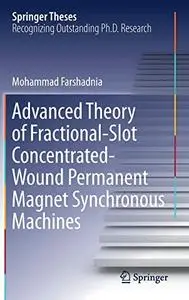Advanced Theory of Fractional-Slot Concentrated-Wound Permanent Magnet Synchronous Machines by Mohammad Farshadnia
English | PDF | 2018 | 266 Pages | ISBN : 9811087075 | 11.8 MB
This book focuses on the analytical modeling of fractional-slot concentrated-wound (FSCW) interior permanent magnet (IPM) machines and establishes a basis for their magnetic and electrical analysis. Aiming at the precise modeling of FSCW IPM machines’ magnetic and electrical characteristics, it presents a comprehensive mathematical treatment of the stator magneto-motive force (MMF), the IPM rotor non-homogeneous magnetic saturation, and its airgap flux density. The FSCW stator spatial MMF harmonics are analytically formulated, providing a basis on which a novel heuristic algorithm is then proposed for the design of optimal winding layouts for multiphase FSCW stators with different slot/pole combinations. In turn, the proposed mathematical models for the FSCW stator and the IPM rotor are combined to derive detailed mathematical expressions of its operational inductances, electromagnetic torque, torque ripple and their respective subcomponents, as a function of the machine geometry and design parameters. Lastly, the proposed theories and analytical models are validated using finite element analysis and experimental tests on a prototype FSCW IPM machine.



